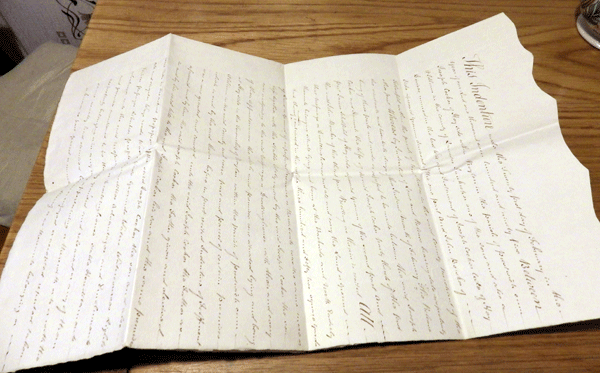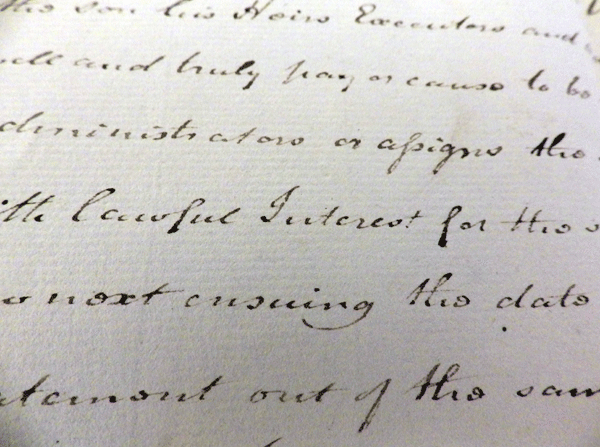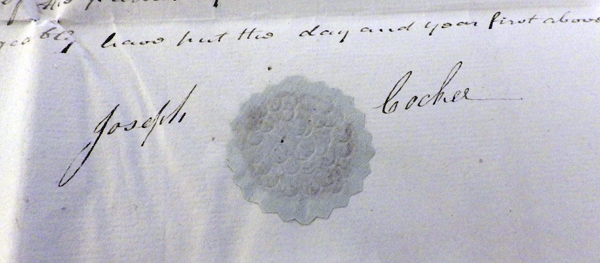
You can find anything on eBay. A friend showed me an old legal document he had, a fascinating thing. I was inspired to go looking for something similar and I found that there were many documents of all ages for sale in eBay, After much hunting I settled on a deed of 1795. It arrived in very good condition.

These old documents survive so well because of the paper they are written on. It is thick and durable, almost like cartridge paper. It is faintly off-white, a colour I would describe as less than cream, perhaps ivory. It appears whiter than it is in the accompanying photographs because I’ve increased the contrast. The deed is written on a single large sheet of paper, 47cm high and 60cm wide, folded to make each page 30cm. I’m sure there will be a name for this size of paper which resembles modern A3.

The legal import of the document is rather beyond me but it appears to relate to land and buildings in Royton, now part of Greater Manchester. The writing appears mostly quite modern though the long ‘s’ is occasionally used. It’s mostly legible though the clarity varies. No doubt this document was written by some Bob Cratchit-type clerk who most likely got rather bored writing such dry deeds day after day and the writing probably suffered a little for that reason. Actually, I think he did astonishingly well. My own writing, as I draft this article, is less than legible to anyone else.

This was the day of the quill, of course. Cheap metal nibs had yet to come. The clerk’s desk would have held all the necessary accoutrements of his day, a sander, a quill knife, inkwell, wafers and seal. The ink is grey/brown, probably India ink a very little faded with time. I love this deed. It’s a window into the past to allow us to look on the work of those writers who were our predecessors of the pen more than 200 years ago.
This is truly fascinating. Thank you for sharing, Deb!
My pleasure, Alberto.
Thank you for sharing this Deb. Are you sure it’s India ink? I believe it might be IG ink. A simple way to know is trying to remove the ink by rubbing it. If the ink flakes, it’s India if not it’s IG 🙂
Yes, it might well be IG.
Fascinating indeed. This may be a version of “Engrossers” script (nowadays often called “Copperplate”). The originals of a notarial deed today is still referred to as a “grosse “ in Belgium. I presume that Bob Cratchit back then got his job because he had successfully completed a training as “penman”. One hundred years later (end of the 19th century) America was rife with college offering penman degrees. Companies needed penman for their internal and external correspondence, minutes, invoices and accounting.
>
Thank you for the information, Hans. Of course Bob Cratchit was rather an anachronism!